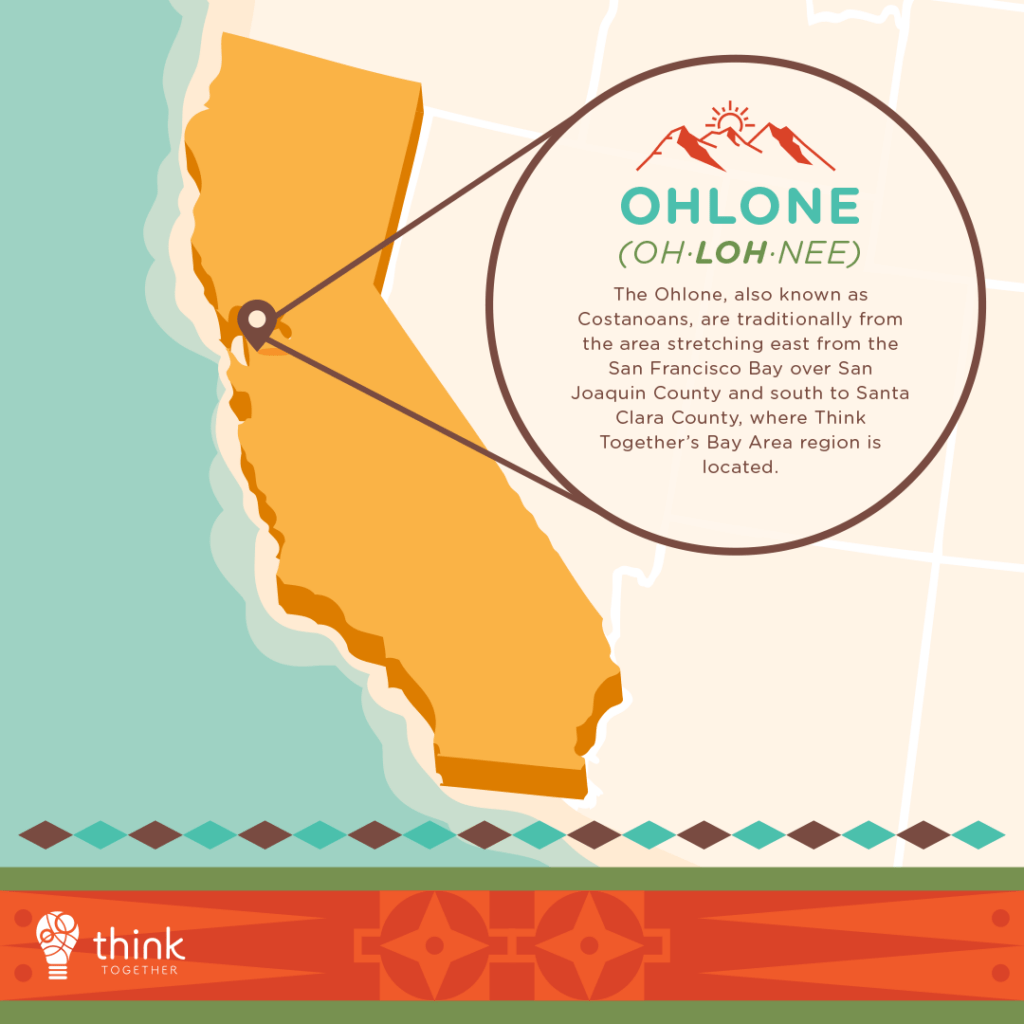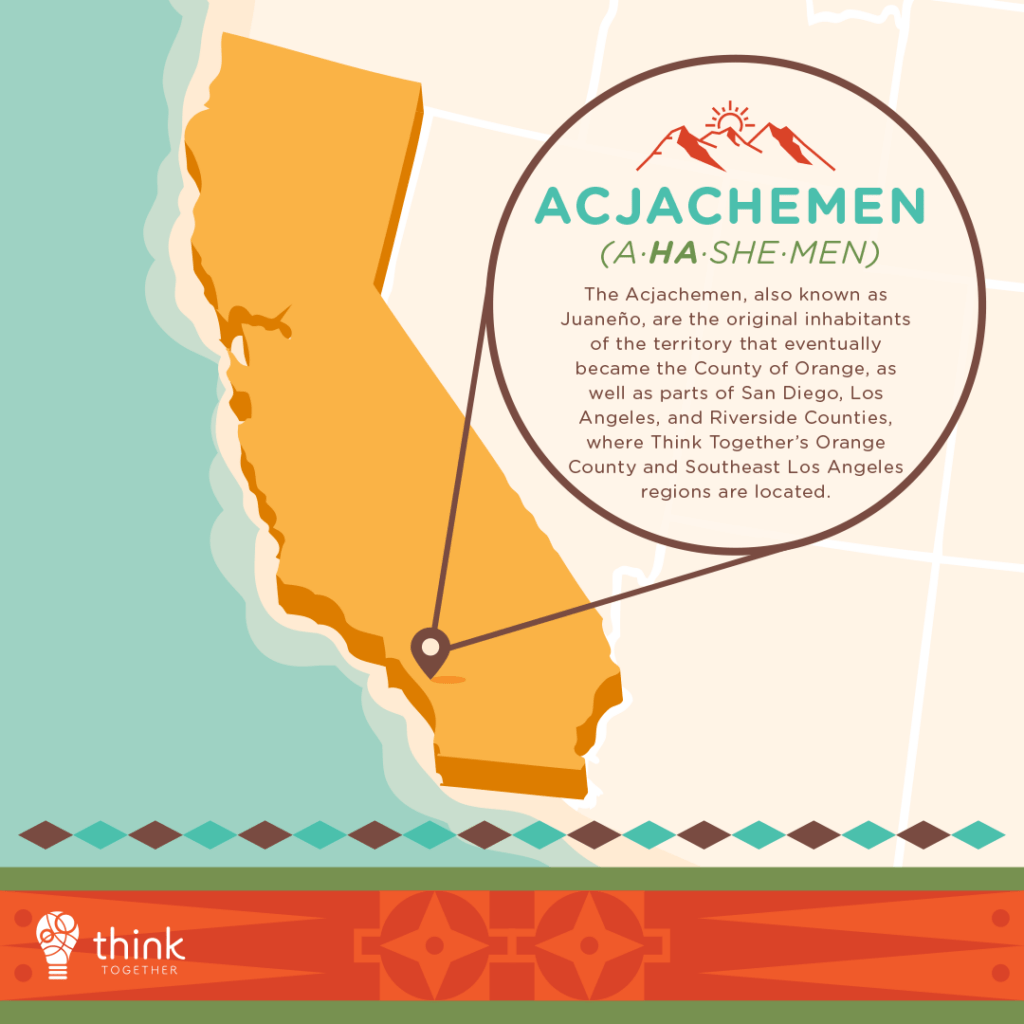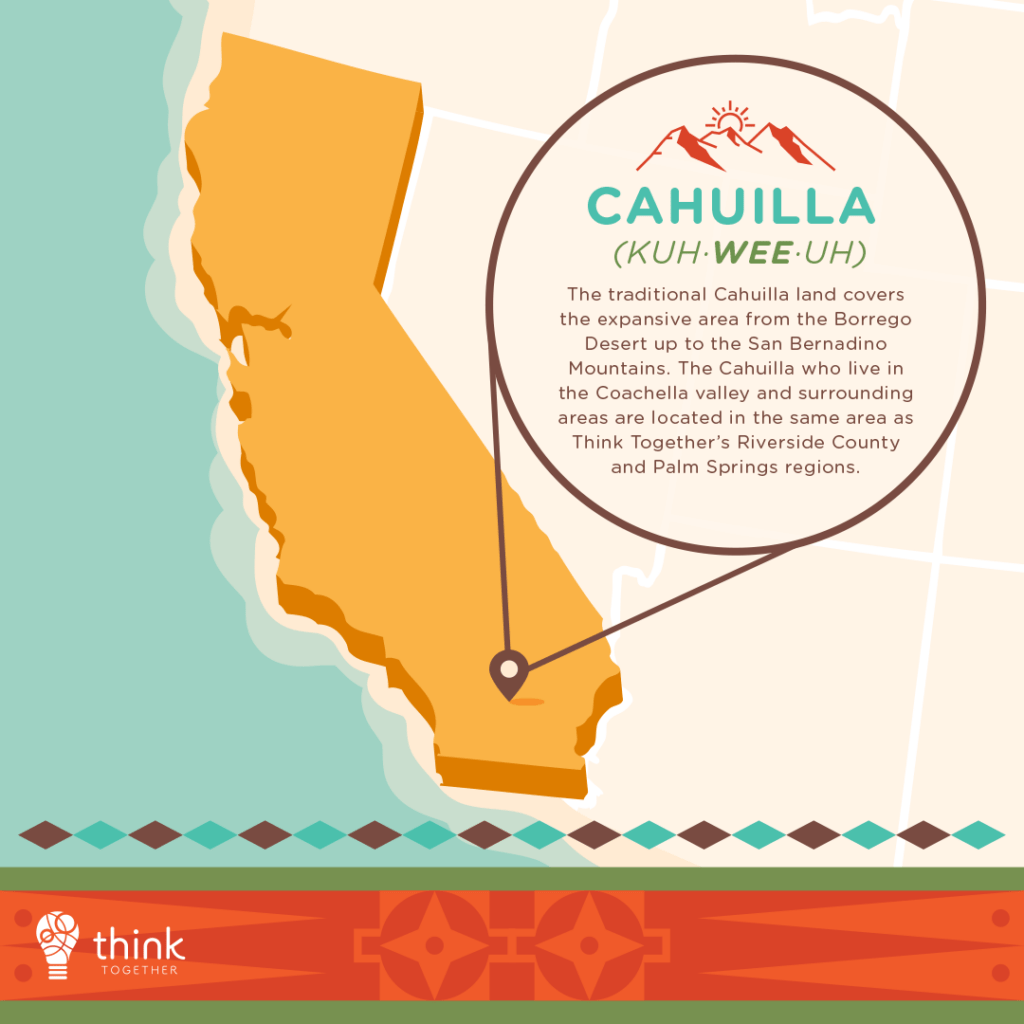National Native American Heritage Month
Native American Heritage Month celebrates the diversity and rich indigenous cultures represented in the United States today. California, on its own, is home to over 100 indigenous communities. Think Together programs are represented in over 450 schools across California spanning from the Bay Area to Palm Springs, located in the traditional land of six of these indigenous groups; the Ohlone, Tongva, Acjachemen, Tataviam, Serrano, and Cahuilla communities.
Colonizers of California from Spain, Europe and early America facilitated a dark history of enslaving, homogenizing, and even falsely declaring some groups of the first residents of this state extinct. Think Together recognizes the historical suppression of indigenous people and their diverse cultures as a loss to all communities. Without the resistance and hard work of generations of these native groups, we would not have the honor of talking about their different cultures and ideas with our youth, a key part of their social and emotional development.
November is not only a great opportunity to learn about the local diversity of Indigenous histories and cultures, but to also be a small part of the cultural preservation and visibility efforts by members of these indigenous nations.

What did a traditional Ohlone neighborhood look like?
Ohlone families lived in round shelters made of willow pole frames thatched with grass or tule over willow pole frames. These homes were all arranged around large buildings for community gatherings and ceremonies, which were usually built with hardwood center posts for structural support and covered with more thatching and earth to seal the walls.
To find out more about the Ohlone, check out the website of the Muwekma Ohlone Tribe or the Costanoan Rumsen Carmel Tribe.

What are some of the Tongva historical landmarks?
The Tongva’s history in the Los Angeles basin stretches back thousands of years, documented in archeological sites of villages, as well as state and federal records. Many of the Tongva’s historically recognized landmarks are not only significant to the first residents of the Los Angeles basin and their descendants but also to newer Los Angeles residents. Right behind L.A.’s world-famous Hollywood sign lies Cahuenga (or Kawenga) Peak, the Tongva’s “place in the mountains.”
To find out more about the Tongva, check out the website of the San Gabriel Band of Mission Indians.

What language do the Tataviam people speak?
Hamiinat! (Hah-mee-nat) means “Hello!” in the Tataviam language.
The Tataviam greetings are the first to be spoken in this area of California! Historically, the indigenous groups of southern California interacted often to strengthen economic and social relationships with each other. As a result, the language spoken by the Tataviam people shares many pieces of vocabulary with neighboring groups like the Serrano.
Paiko tan hiiv! (Pie-ee-ko than hee-v) or See you later!
To find out more about the Tataviam, check out the website of the Fernandeño Tataviam Band of Mission Indians.

What kind of art do the Acjachemen people make?
The Acjachemen nation traditionally wove intricate designs into coiled baskets using juncus textilis or sumac, pine needles, yucca, and deer grass. Gathering sites for these materials can be found all over the coast of California for Acjachemen basketweaves. Baskets were traditionally used for gathering, cooking and even worn as headpieces. The Acjachemen baskets are an example of fine art that combines beautiful form and practical function.
To find out more about the Acjachemen, check out the website of the Juaneño Band of Mission Indians, Acjachemen Nation.

What kind of music do Serrano people play?
Singing is a major feature of traditional Serrano music. Historical Serrano songs are used to describe social customs, creation stories, and history. Unlike many other Native American communities, traditional Serrano music does not include drums for rhythm. To accompany the singing, Serrano musicians play rattles created from gourds with palm tree seeds inside.
To find out more about the Serrano, check out the websites of the San Manuel Band of Mission Indians or the Morongo Band of Mission Indians.

What do the Cahuilla traditionally keep in their kitchens?
One of the common ingredients of Cahuilla meals is honey mesquite beans. The mesquite plant can be ground into a meal to make a small cake, the juice could be mixed into water for a sugary drink, and many Cahuilla children would often suck on the bean like candy. The Washingtonia filifera, the only palm tree native to California, grows a sweet fruit often enjoyed by the Cahuilla as well as strong fronds that could be shaped into utensils for eating and bows for hunting.
To find out more about the Cahuilla, check out the website of the Agua Caliente Band of Cahuilla Indians.
Explore California’s Native American heritage and history with resources from the California Native American Heritage Commission.



